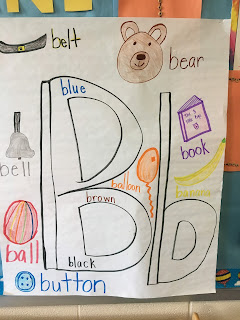Written by Cori Latta, 3rd-5th Grade ELA Teacher
In my classroom students love the variety of
books there are to choose from. From fiction books about princesses, scary
stories, and a child named Rodrick, to non-fiction texts comparing the sizes of
animal teeth and biographies about famous authors, athletes, and celebrities.
The levels in my library range from A-Z to fit the needs of any student. My
classroom library is the favorite part of my room, and if I asked my students I
think they might agree. Seeing a student pick out a book and read it for fun, because
of interest, or to gather information is definitely one of the most rewarding
learning moments a teacher can witness.
However,
a resourceful classroom library does not get this way over night, or honestly
even in a first year of teaching. A classroom library is an ongoing project
that is constantly being updated, leveled, and organized. It has taken over seven years of
volunteering, donations, going to garage sales, and browsing through used books
at thrift stores to build the library I have. The best app I have found most
useful for leveling my books is called Lit. Leveler. It will scan your book and
give you a Lexile level, DRA, and GRL (F&P). It only costs a few dollars
and is worth the price.
Checking
out books in a classroom library is a routine just like management that must be
established within the first few weeks of school. In the past I allowed
students who were divided by reading groups to check out books each day of the
week. Students were allowed to keep up to four books at a time, two fiction and
two non-fiction on their independent reading level, in their desks that they
could read for IDR assignments or when they finished other assignments. During
the following week on their check-out day they would be allowed to exchange the
books out for new ones or keep the books they have been reading, but if they
choose to keep the books they would have to wait another week to check out new
books. In the past when I taught fifth grade I used a notecard system where
students would keep track of the titles they checked out on a wall in
individual small envelopes that had each student’s names stapled to a bulletin
board.
This
year I am allowing my RTI reading groups to check out two books at a time. Just
like I have allowed reading groups check out books on certain days of the week,
I am doing the same for my RTI groups, except by their leveled color folder
which is what holds any accountability pieces they will do in class or small
groups. My third and fourth grade homerooms keep their books in their
designated mailboxes and my RTI students keep their books in a designated RTI
box. As the year progresses I will allow students to check out up to four books
at a time.
Building
a classroom library is essential no matter what subject or grade you are
teaching. Students love gaining the gift of reading and being able to choose
what they want to read. Collage book covers on a bulletin board or wall to
allow students to see a small preview of what interests and prizes your library
holds.
If you are interested
in volunteering to earn “free” books Scholastic holds a warehouse sale every
December and May. For each hour you work you earn $10 worth of books from the
sale to spend.




















